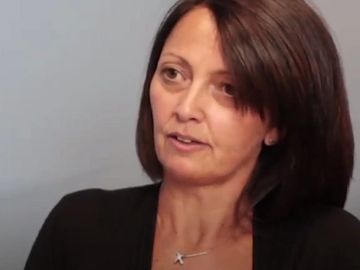Online video resources on starting CPAP
From Resmed, Philips, and the Oxford Sleep Unit
Resmed have produced several instructional videos, an early but excellent and complete guide. Later ones featuring the use of an app to track progress. The Oxford Sleep Unit has produced its own introductory video that covers everything useful to know when starting CPAP, given by Blake Marsh, the Lead Physiologist for the Service.

Set of instructional videos for ResMed
Shows the Airsense 10 and a nasal mask. There are many different types of mask that can cover just the nose, or the nose and mouth. Please see a complete list of fitting videos below.
https://www.youtube.com/playlist?list=PLIlzYr0dufYnDgCXXLtmYW2dflp1ImgtF
The most immediately useful videos are numbers 3,4,5 and 6

Oxford Sleep Unit Video
Blake Marsh, Lead Physiologist at the Oxford Sleep Unit, goes through the use of CPAP step by step, demonstrating one of CPAP machines used by the service. This video is slightly out of date, the paperwork has now changed, and we use a variable pressure APAP rather than fixed pressure CPAP.
https://www.youtube.com/watch?v=gOOD41L2cYI

The use of a supportive app
This promotional webpage describes the use of an app to help keep track of how your use of CPAP is going. It includes some videos of patients' experiences. It only applies to certain (later) Resmed CPAP machines.
Other useful videos
These come from other sleep clinics that set CPAP in similar ways to the Oxford unit and have produced helpful guides as well as some other Resmed productions.

From the Belfast Health and Social Care Trust
Explains how the sleep therapist will choose the best mask for you, and how to use the Airsense 10 CPAP machine and humidifier.

Fitting different masks, and air leaks
These videos feature individual types of masks and their fitment.
Nasal masks
N20: https://www.youtube.com/watch?v=J_kTSko5Vak
P10: https://www.youtube.com/watch?v=Gs4v1Lk3FyM
Nose and mouth masks
F20: https://www.youtube.com/watch?v=AY61YxgFwWE
F30: https://www.youtube.com/watch?v=9jSAJFnerCY
F40: https://www.youtube.com/watch?v=i6zv88ZoOlo
Philips Respironics complete mask fitting playlist
https://www.youtube.com/watch?v=Jr44bOCM6V0&list=PLUkApVTR3S-5cVbIxi-pQeKxJWr7u0TQE

A patient's experience
This video tells the story of a lady learning to cope with CPAP and experiencing the benefits.

What is obstructive sleep apnoea?
This video is a a longer interview between Prof John Stradling and sleep nurse Beccy Mullins discussing the causes and consequences of sleep apnoea, similar to video 2 within the 'Complete set of instructional videos' above.
https://www.youtube.com/watch?v=

Sizing guide for the Resmed F20 nose and mouth mask
This is not a video, but is the sizing guide to help choose the right sized mask. The F20 is our commonest mask and the nearest to a one-size-fits-all mask. Measure the distance from the position marked by the top arrow (on the bridge of the nose) down to just below the bottom lip (in inches). If 3.5 inches, then a small may fit best, 4 inches = medium (most common size requied), and 4.5 inches = large. This is only approximate.

Sizing guide for the Resmed N20 nasal mask
This is not a video, but is the sizing guide to help choose the right sized mask. The N20 is our commonest nasal mask. Measure the width of the widest part of the nose. If up to 1.5 inches, then a small may fit best, if 1.5 to 2 inches = medium, more than 2 = large. This is only approximate.